Drug addiction: symptoms, causes, and effects
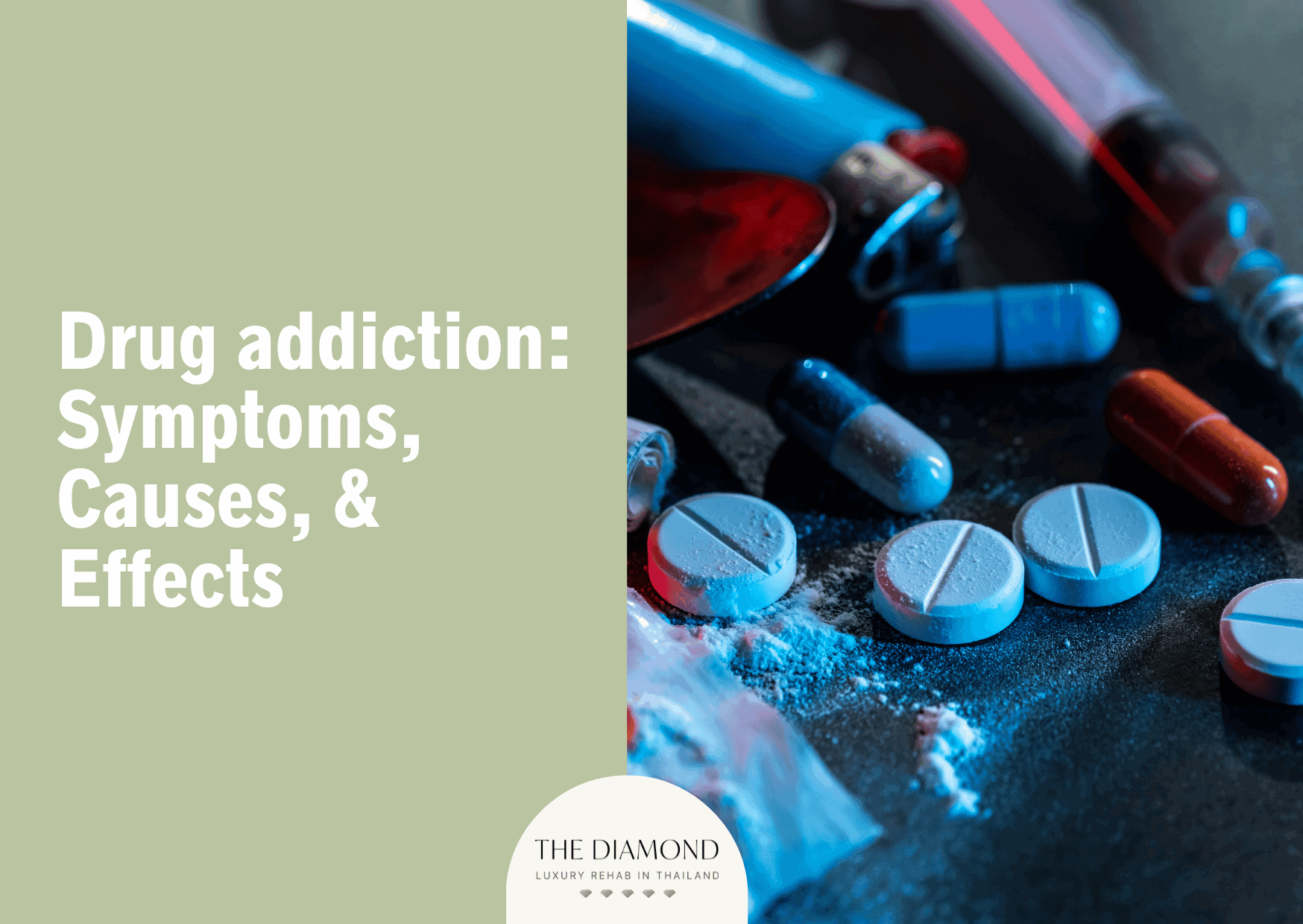
Drug addiction is the compulsive need to take a specific drug regardless of harmful consequences. Also known as substance use disorder, drug addiction induces intense cravings and potentially life-threatening withdrawal symptoms upon cessation.
The causes of drug addiction are a combination of genetic, environmental, and developmental factors. Many people have a genetic predisposition to develop an addiction. The brain’s reward system also contributes to addiction because drugs affect dopamine levels.
The effects of drug addiction are physical, psychological, and social. Drugs change a person’s appearance, increase the risk of various health problems, and worsen underlying health issues. Drug addiction contributes to or aggravates mental health disorders and relationship problems.
Characteristics of drug addiction are the inability to stop, changes in mood, appetite, and sleep, denial, and continuing to use drugs despite consequences, among others.
Treatment for drug addiction focuses on therapy, but some people may need medications too. Support groups play an essential part in drug addiction treatment.
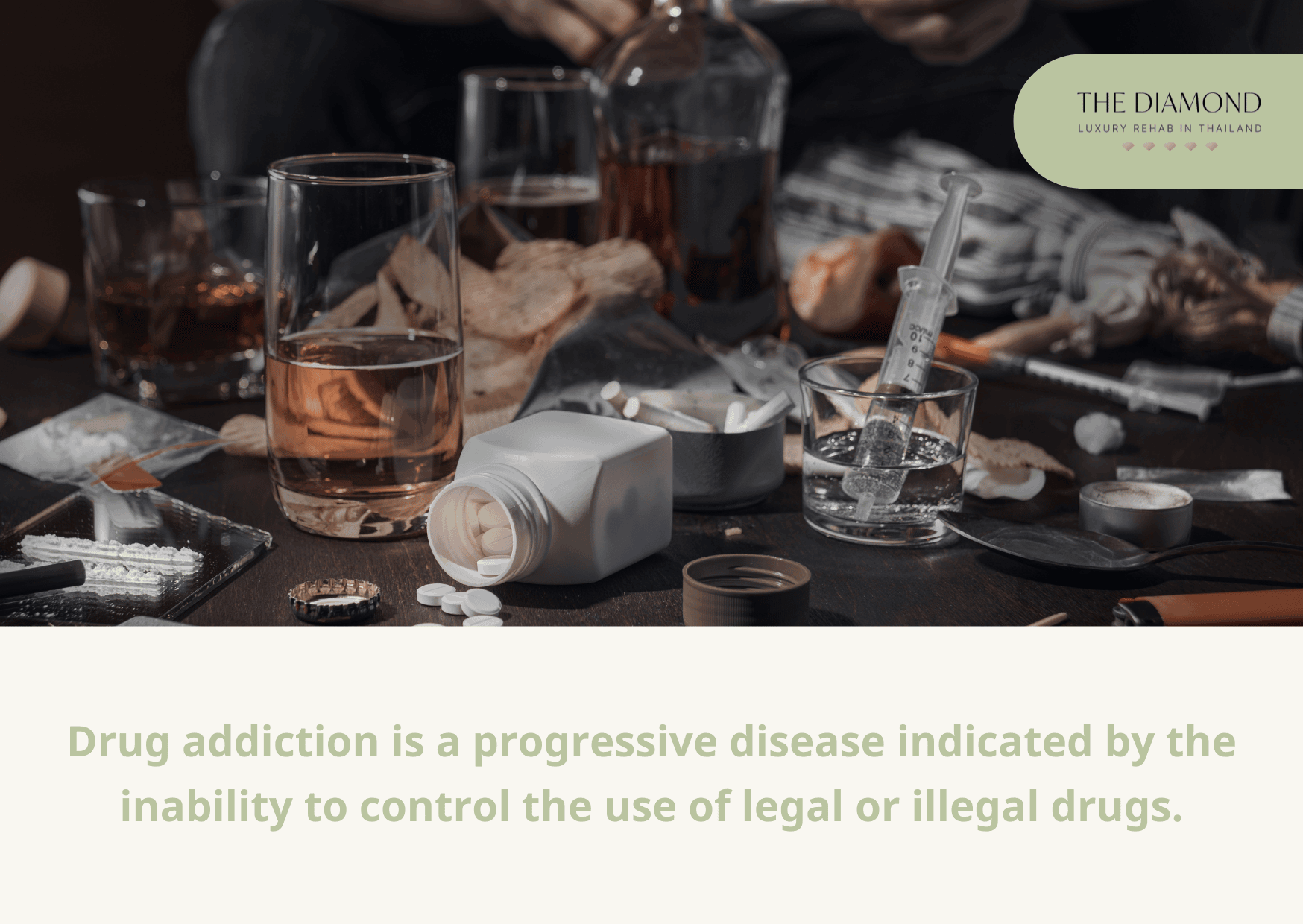
What is drug addiction?
Drug addiction is a progressive disease indicated by the inability to control the use of legal or illegal drugs. A person with drug addiction continues to use addictive substances despite its harmful effects and consequences.
The National Institute on Drug Abuse defines drug addiction as a chronic, relapsing disease whose main characteristic is compulsive drug-seeking due to repeated exposure. Drug addiction can adversely impact a person and may even lead to death when left unmanaged and untreated.
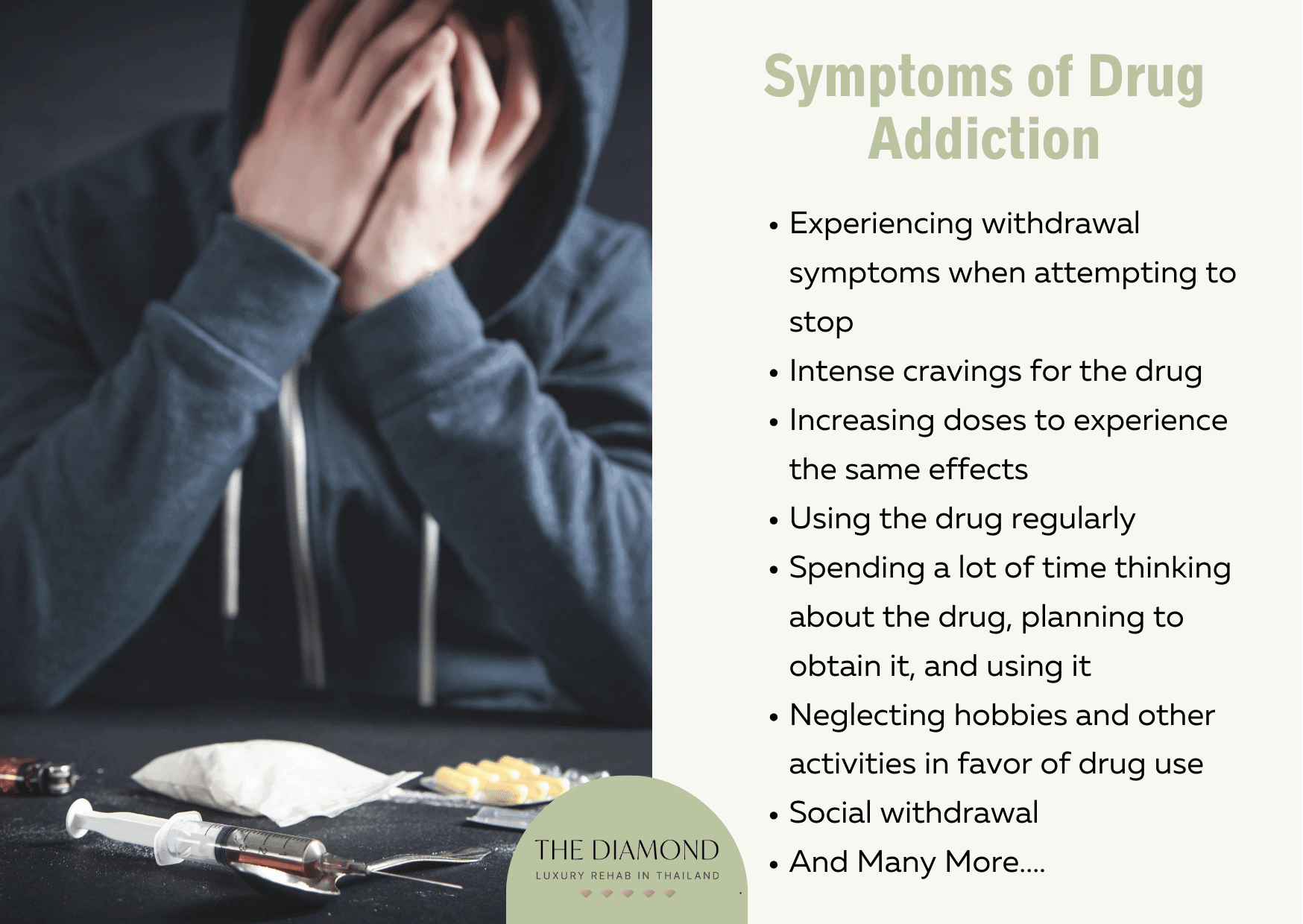
What are the symptoms of drug addiction?
The main symptoms of drug addiction depend on the specific substance abused and are listed below.
- Experiencing withdrawal symptoms when attempting to stop
- Intense cravings for the drug
- Increasing doses to experience the same effects
- Using the drug regularly
- Spending a lot of time thinking about the drug, planning to obtain it, and using it
- Neglecting hobbies and other activities in favor of drug use
- Social withdrawal
- Spending more time with other people who use drugs, neglecting family and friends
- Spending a lot of money to procure drugs
- Failing to meet work or school obligations
- Engaging in risky activities such as stealing just to obtain the drug
- Reacting in anger or frustration when other people express concerns about drug use
- Lying to friends and family about drug use and the extent of the problem
- Neglected appearance and poor hygiene
What are the causes of drug addiction?
The causes of drug addiction are influenced by changes in the brain, genetics, and environmental factors. A combination of different factors may contribute to the development of addiction.
A 2019 paper published in Physiological Reviews by Nora D. Volkow, Michael Michaelides, and Ruben Baler of the National Institute on Drug Abuse further explains the influence of brain changes, genetics, and environmental factors on drug addiction. Physical addiction to the drug occurs due to changes in how the brain feels and processes pleasure. The drug causes physical changes to neurons, which communicate through neurotransmitters. These changes impair control and persist even after abstinence from consuming the drug, which explains cravings, withdrawal symptoms, and relapse in some people.
Genetic predisposition may influence the development of addiction through a mechanism related to traits like vulnerability and impulsivity. Environmental factors may also play a significant role in the development of addiction, such as family upbringing or beliefs and social circles, which may shape an individual’s perception of the drug and their attitudes toward drug use.
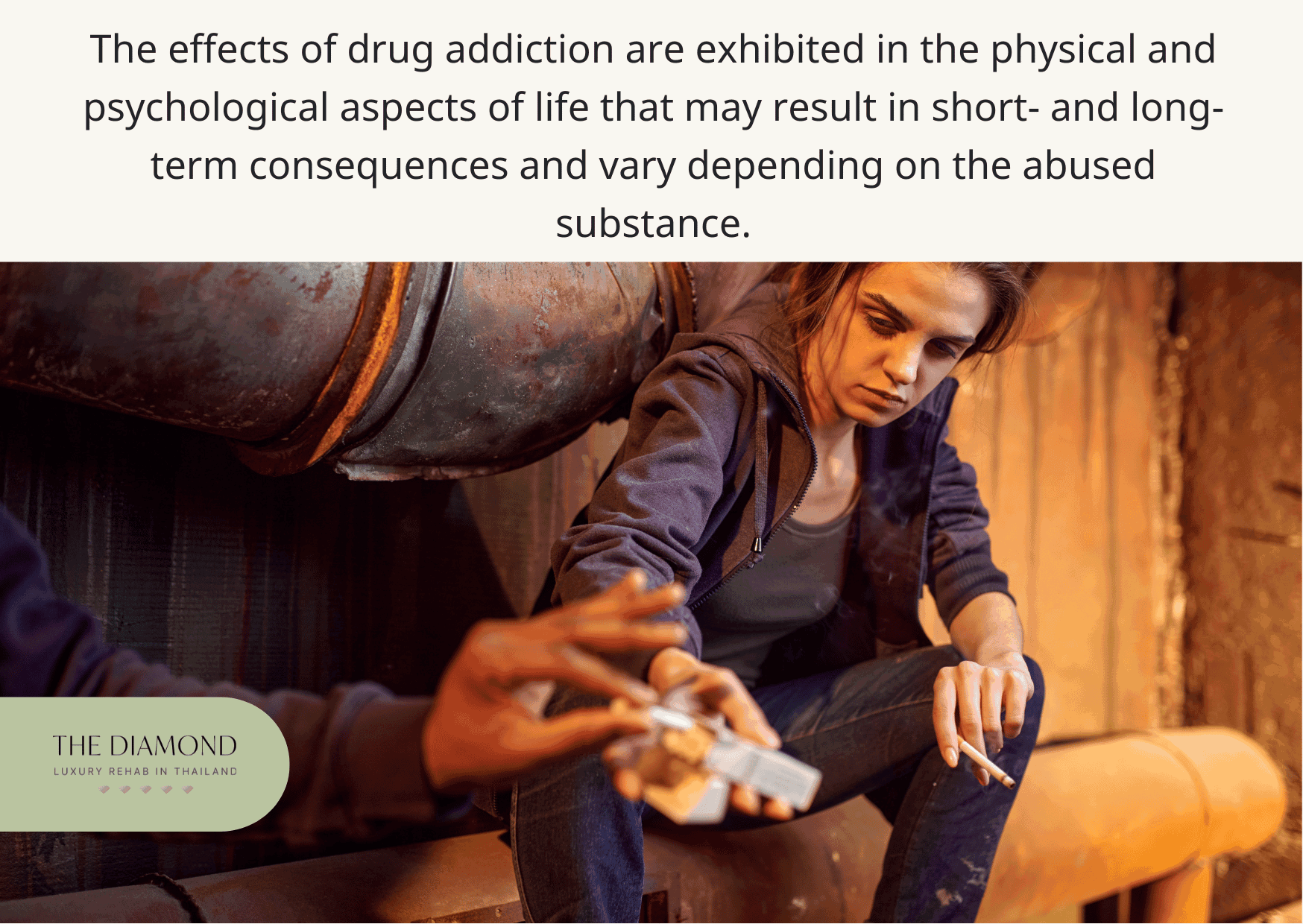
What are the effects of drug addiction?
The effects of drug addiction are exhibited in the physical and psychological aspects of life that may result in short- and long-term consequences and vary depending on the abused substance.
According to a paper published in ISRN Addiction by Thomas Peter Fox, Govind Oliver, and Sophie Marie Ellis of the King’s College Hospital London that explored the different short-term and long-term mental and physical effects of drug addiction, the short-term mental effects of drug addiction include difficulty concentrating, aggression, irritability, hallucinations, angry outburst, and lack of inhibition. Meanwhile, the long-term mental effects of drug addiction include cognitive decline, psychosis, anxiety, depression, paranoia, and memory loss.
Short-term physical effects of drug addiction include slurred speech, high blood pressure, elevated body temperature, shallow breathing, rapid heart rate, drowsiness, insomnia, increased or decreased appetite, and uncoordinated movements.
Long-term physical effects of drug addiction include kidney damage, liver damage, cirrhosis, tooth decay, skin damage, cardiovascular problems, infertility, seizures, stroke, higher risk of cancer, sexual dysfunction, weight loss or weight gain, and appetite problems. The most severe effects of drug addiction are overdose and death.
Other effects of drug addiction include relationship problems, impaired performance at school or work, job loss, financial difficulties, legal troubles, and a higher risk of engaging in risky activities and behaviors.
Why is using drugs addictive?
Using drugs is addictive because it affects the brain and how it works. Psychoactive substances in drugs act on neurotransmitters in the brain and also affect the brain’s reward system. A 2016 paper published in the Lancet Psychiatry by George Koob, director of the National Institute on Alcohol Abuse and Alcoholism, and Nora Volkow, director of the National Institute on Drug Abuse of the National Institutes of Health, explains in detail the analysis of the neurobiology of drug use and why it is addictive. Drug use activates the brain’s reward systems responsible for the feelings of pleasure and releases certain chemicals such as dopamine. As a result, an individual experiences pleasure, satisfaction, high, and other positive emotions.
Furthermore, circuits in the brain responsible for reward interact with other circuits that regulate mood, stress, memory, and decision-making, causing imbalances that make a person feel strong, drive the motivation to take the drug and enhance the brain’s learning process that associates the drug with pleasurable sensations. This causes neuroadaptations in the brain that result in a declined response to the average doses of the drug. Higher amounts are necessary to achieve the same effects, ultimately leading to addiction.

What are the risk factors for drug addiction?
The risk factors for drug addiction can be biological, environmental, and developmental. Biological factors that increase the risk of drug addiction include genetic predisposition and being male. Adolescents and young adults are also more likely to develop substance abuse addiction.
Early first-time use of drugs is also a risk factor for addiction. According to a 2019 paper published in the European Journal of Psychiatry by psychiatrist P. Cabral Barata and colleagues from Hospital Prof. Dr. Fernando da Fonseca and Centro Hospitalar Psiquiátrico de Lisboa in Portugal, early exposure to drug use and consumption lead to increased susceptibility to develop drug addiction later in life. This risk factor is both biological and developmental. Adolescence, in particular, is a critical period for brain development, especially the development of the brain’s prefrontal cortex, which is involved in regulating emotions, desires, and decision-making. Exposure to psychoactive substances during this period may develop into a severe risk of drug addiction in the future.
Environmental risk factors for drug addiction include peer pressure, a family history of drug abuse or growing up without structure and discipline or where substance use is considered normal, and exposure to social media where certain substances are glorified. A history of trauma, sexual abuse, neglect, and psychological factors can also increase the risk of addiction.
What is the difference between drug addiction and drug abuse?
The difference between drug addiction and drug abuse is that drug abuse refers to misusing any drug or substance, including cigarettes, alcohol, and prescription medications. In contrast, drug addiction is the compulsive use and consumption of the drug despite the consequences it causes and efforts to quit.
A good example of abusing drugs is having a prescription for some medications and then consuming them in higher doses or more frequently than prescribed.
Abusing drugs does not necessarily equate to addiction. Drug addiction and drug abuse are not synonymous with each other. Although drug abuse is not considered an addiction, it’s still a cause for concern as abuse leads to tolerance, dependence, and eventually addiction.
Drug abuse is easier to stop compared to drug addiction. A person may firmly decide to quit taking a specific substance. Drug addiction, however, is complex and complicated. Even when an individual attempts to stop, cravings and withdrawal symptoms are powerful and difficult to resist without immediate medical attention.
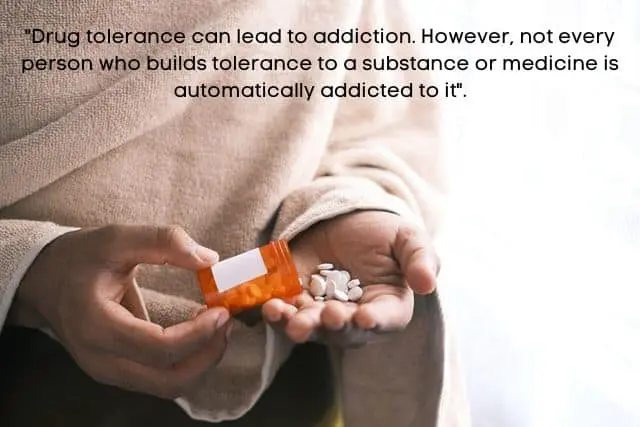
What is the difference between drug addiction and drug tolerance?
The difference between drug addiction vs. drug tolerance is that drug addiction means a person is unable to stop using substances, while tolerance occurs when the body gets used to medicine or other substance and needs higher amounts or doses to achieve the same effect. Drug tolerance isn’t considered a mental health disorder or disease.
People develop tolerance to the drug’s psychoactive effect because of the brain’s adaptive response to the regular doses or amounts of substance consumed, leading to reduced psychoactive effects. Individuals then increase substance intake to achieve the same euphoric sensation and ultimately fall into a vicious cycle of consuming higher doses more frequently. Developing tolerance varies depending on the substance consumed and can be short-term, long-term, and learned.
For instance, tolerance to cocaine develops quickly, but building tolerance to prescription drugs takes longer. On the other hand, learned tolerance is a type of tolerance that occurs when individuals build skills to manage the effects of substance use over time.
Drug tolerance can lead to addiction. However, not every person who builds tolerance to a substance or medicine is automatically addicted. Some people don’t become addicted at all. However, tolerance should be considered a risk factor. One of the significant symptoms of addiction is consuming drugs in higher doses due to tolerance. Drug tolerance warns non-addictive individuals to reconsider their actions and stop before developing an addiction.
Drug addiction is associated with intense cravings for the drug; drug tolerance does not entail a compulsive need for the substance. Tolerance develops because specific receptors in the body that activate upon drug intake become less responsive to regular doses, which the body also discards faster. However, people suffering from drug addiction experience a compulsive desire to use and consume drugs or substances to function normally, which explains cravings and withdrawal symptoms.

What are the substances used for drug addiction?
The substances used that can cause drug addiction are listed below.
- Marijuana
- Prescription opioids
- Cocaine
- Anabolic steroids
- Heroin
- Benzodiazepines
- Inhalants
- Prescription stimulants
- Barbiturates
- Methamphetamines
- Club drugs
- Hallucinogens
The most common substances of abuse among individuals with drug addiction are marijuana, cocaine, heroin, anabolic steroids, methamphetamine, inhalants, and club drugs.
1. Marijuana
Marijuana is a psychoactive drug used for both recreational and medicinal purposes. Marijuana addiction, also known as marijuana/cannabis use disorder, refers to the chronic relapse associated with the compulsive and excessive consumption of marijuana or cannabis despite its detrimental consequences.
Statistics show that marijuana addiction affects approximately 10% of 193 million cannabis users worldwide, according to a 2021 article published in Nature Reviews Disease Primers by Professor Jason P. Connor of The University of Queensland and colleagues from Toronto, Munich, and Lebanon. The Centers for Disease Control and Prevention reports that marijuana is the most commonly used federally illegal drug in the United States. In 2019, around 48.2 million people, or 18% of Americans, had used cannabis at least once. The same report also states that three in 10 people who use marijuana develop marijuana use disorder.
The causes of marijuana addiction may be due to the chronic and repeated use of marijuana that leads to tolerance and may contribute to the development of addiction. A combination of factors, including genetic predisposition, existing mental health conditions such as anxiety and depression, and socio-environmental influences, may influence marijuana addiction.
The effects of marijuana addiction include daily cough, more frequent lung illnesses, increased heart rate, and nausea and vomiting. A 2018 paper by researcher Amna Zehra and colleagues from the National Institute on Alcohol Abuse and Alcoholism in Maryland further explains the effects of marijuana addiction in their review published in the Journal of Neuroimmune Pharmacology. Persistent marijuana use directly influences areas of the brain and impairs cognitive and executive functions responsible for memory, decision-making, coordination, attention, learning, reaction time, and emotion.
Marijuana addiction is diagnosed when a person meets at least two of the 11 criteria from DSM-5. According to Yale Medicine, the criteria may include intense cravings, inability to decrease marijuana use, and experiencing social or relationship problems.Marijuana addiction affects a person through changes in moods, appetite, and sleep patterns. Cannabis addiction decreases motivation and productivity to handle daily activities, which may affect school and work responsibilities.
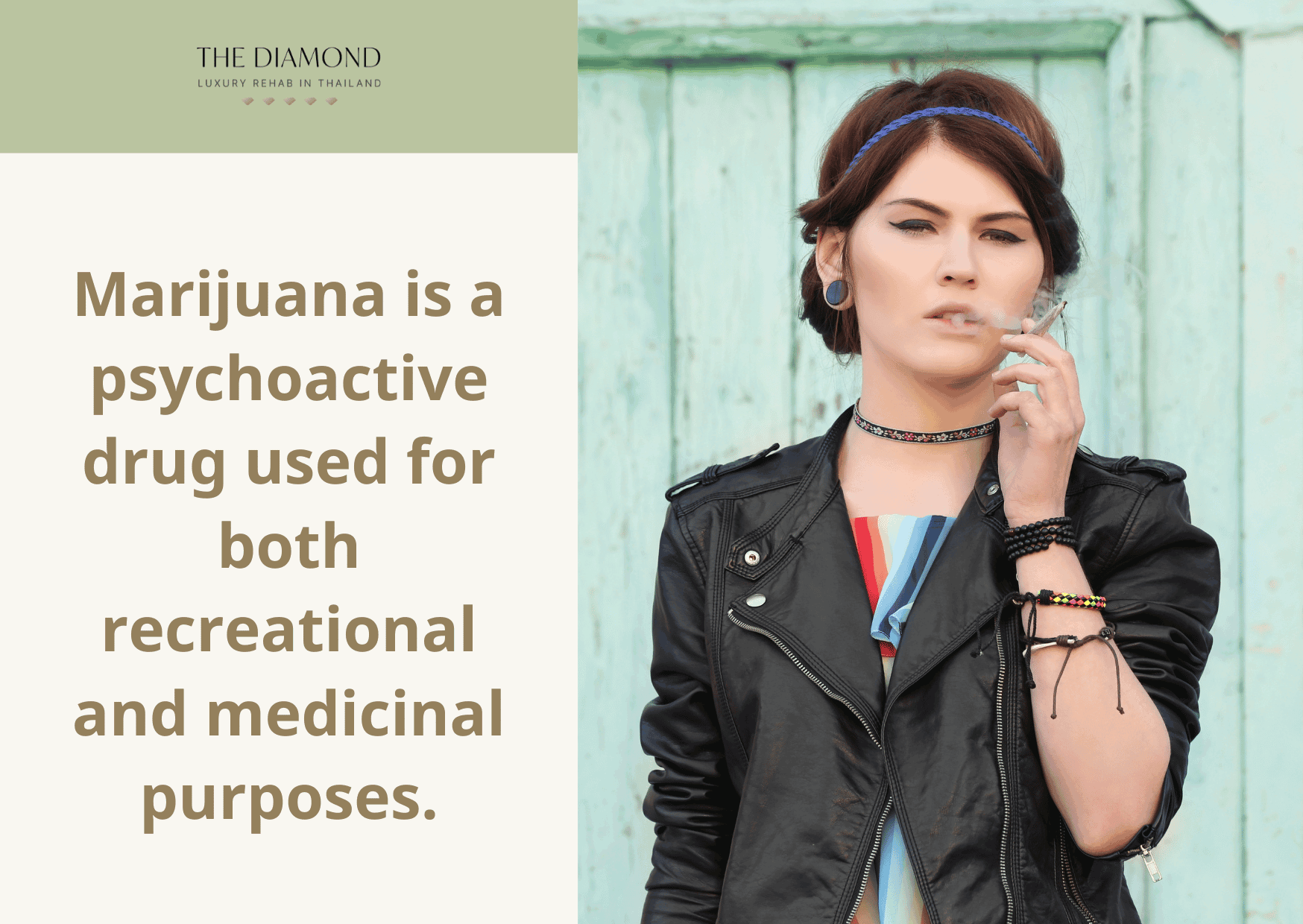
2. Cocaine
Cocaine is a powerful and highly addictive stimulant drug made from the coca plant leaves native to South Africa. Cocaine addiction is a disorder indicated by a compulsive need to take cocaine regardless of its harmful physical and mental health effects.
About 4.8 million people aged 12 and older have used cocaine in 2021, as the National Institute on Drug Abuse reported in 2021. In the same year, around 1.4 million people suffered from cocaine use disorder. About 24,486 people died in the United States due to complications associated with cocaine overdose.
The Various causes that contribute to the development of cocaine use disorder include various factors. A 2022 review paper published in Substance Abuse and Rehabilitation led by research physician Elizabeth Schwartz of Yale University discussed important perspectives on cocaine addiction, including its causes and effects on an individual. Genetics, neurotransmitter changes in the brain, and environmental causes are potential contributors to cocaine addiction. Risk factors for cocaine addiction include underlying mental health problems, peer pressure, and accessibility to the drug.
The short-term effects of cocaine use include euphoria and high energy levels. With the progression of cocaine use disorder, susceptibility to various long-term effects increases, including legal problems, incarceration, malnourishment, lung infections, scarring, nasal perforation, cardiovascular problems, heart attack, and stroke.
Cocaine use disorder is diagnosed when a patient meets the criteria from DSM-5.
The effects of cocaine addiction include causes significant impairments, such as restlessness, frustration, and inability to meet school or work obligations. Individuals suffering from cocaine addiction constantly look for means to acquire cocaine and may engage in risky activities and frequent arguments with family members.

3. Heroin
Heroin is an opioid drug made from morphine. Heroin addiction is a severe and life-threatening substance use disorder indicated by persistent heroin use regardless of its consequences. Heroin is consumed through injecting, snorting, or smoking.
Around 1.1 million people aged 12 and older reported using heroin in 2021. In comparison, about 1 million people from the same age group in the United States suffer from heroin use disorder, according to a report by the National Survey on Drug Use and Health. Heroin overdose played a role in 9,173 deaths in the same year, as reported by CDC WONDER Database.
The specific causes of heroin addiction are unclear. Several contributing factors are involved in heroin addiction. These include genetic predisposition, family dynamics, social circle, and deficiency in neurotransmitters that encourage people to seek the sensation of pleasure. Coexisting mental health problems also contribute to heroin addiction.
The effects of heroin addiction result in chronic medical complications, especially in respiratory and mental health. According to a research report published by the National Institute on Drug Abuse, heroin addiction weakens the immune system, which may be a factor in lung complications such as pneumonia and tuberculosis. In addition to severe problems with physical and mental health, heroin addiction leads to consequences of legal issues, unemployment, homelessness, social isolation, financial problems, damage to vital organs, HIV or hepatitis, and even death.
Diagnosing heroin addiction includes a thorough evaluation and assessment by a healthcare expert.
Heroin addiction affects a person by inducing a pleasurable sensation and is accompanied by a warm flush on the skin, dry mouth, and heaviness in the limbs during the high. It may also cause nausea, vomiting, and extreme itch. After experiencing the initial effects, heroin users may experience drowsiness for a few hours, mental confusion, decreased heart rate, and severely slowed breathing that may lead to coma and lasting brain damage.

4. Anabolic steroids
Anabolic steroids are synthetic variations of the male sex hormone testosterone. These are performance-enhancing drugs to increase muscle mass and decrease body fat. Anabolic steroid addiction is a strong or compulsive need to take anabolic steroids and experience cravings when not using them.
Evidence shows that 32% of people who misuse anabolic steroids develop a dependence on the substance.
Causes of addiction to anabolic steroids include underlying mental health problems such as body dysmorphic disorder, family history of substance abuse and addictive behaviors, and exposure to the drugs through social circles. Physical causes, such as the effects of anabolic steroids on hormones and neurotransmitters, could also play a role.
Effects of addiction to anabolic steroids include paranoia, jealousy, extreme irritability and aggression, delusions, impaired judgment, and mania. Physical effects of anabolic steroid addiction include kidney problems, liver damage, heart problems, a higher risk of blood clots, and others.
Diagnosis of anabolic steroids addiction is similar to the diagnostic process of other substance use disorders. It includes psychological evaluation and physical assessment. Medical laboratory tests may be necessary for the diagnosis.
Anabolic steroid addiction affects a person by inducing extreme changes in their mood and behavior. The addict can be very aggressive, furious, and overreact. This can affect relationships.
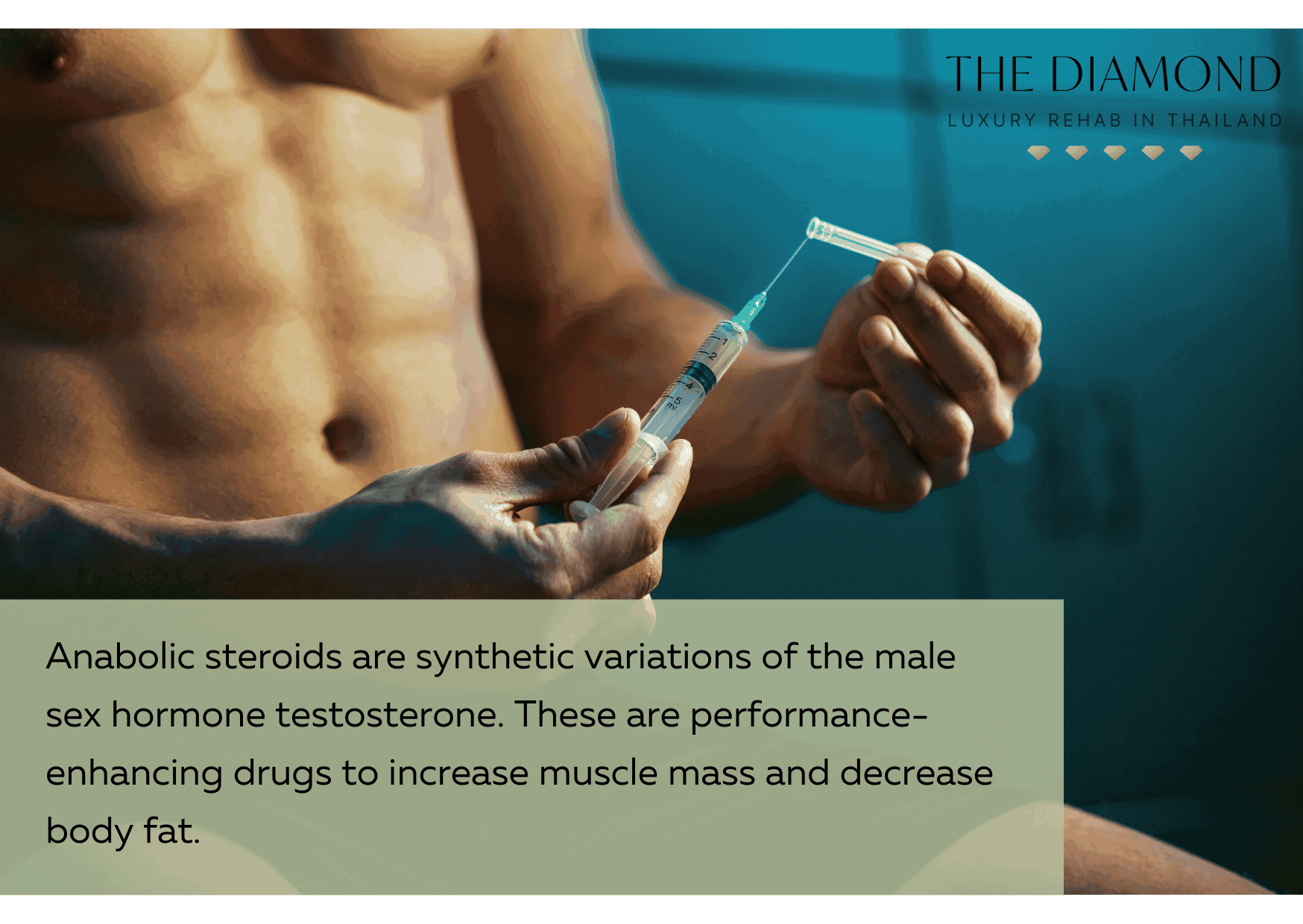
5. Methamphetamine
Methamphetamine is a powerful nervous system stimulant and is among the most dangerous addictive substances. Methamphetamine addiction is a serious disorder that causes physical and psychological dependence on methamphetamine and elevates compulsive drug use.
In 2021, about 2.5 million people aged 12 and older used methamphetamine. Among the same age group, around 1.6 million people reported being addicted to methamphetamine, according to a National Institute on Drug Abuse research report. In the same year, approximately 32,537 deaths were associated with an overdose of meth.
The causes of methamphetamine addiction may be attributed to the Genetic and environmental factors that interact with crucial developmental stages in life to contribute to the development of addiction. Peer pressure, history of physical or sexual abuse and trauma, early drug exposure, and family influence contribute to meth addiction.
Effects of methamphetamine addiction include cognitive impairment and cardiovascular and cerebrovascular diseases. Cognitive impairment and behavioral changes may manifest in memory loss, aggression, mood swings, hallucinations, and paranoia. Meth addiction may also result in dental health problems and extreme weight loss. Dr. Martin P. Paulus and Dr. Jennifer L. Stewart of the University of Tulsa further explained in their 2020 paper published in JAMA Psychiatry the different clinical complications of methamphetamine addiction. Methamphetamine use can cause severe medical problems such as cardiovascular and cerebrovascular diseases, including methamphetamine-related strokes, vasoconstriction, pulmonary hypertension, atherosclerotic plaque formation, cardiac arrhythmias, and cardiomyopathy.
Methamphetamine addiction diagnosis involves a comprehensive physical and psychological evaluation where healthcare professionals ensure that the criteria from DSM-5 to establish the diagnosis are met.
Methamphetamine addiction affects a person through various behavioral changes such as enhanced energy and alertness, sleeplessness, increased sexual drive, talkativeness, sweating, weight loss, jaw clenching, teeth grinding, and appetite loss. Methamphetamine can also exacerbate symptoms of psychosis, depression, suicidality, guilt, hostility, anxiety, euphoria, and distractibility. It also causes intense cravings and severe withdrawal symptoms upon cessation of the drug.
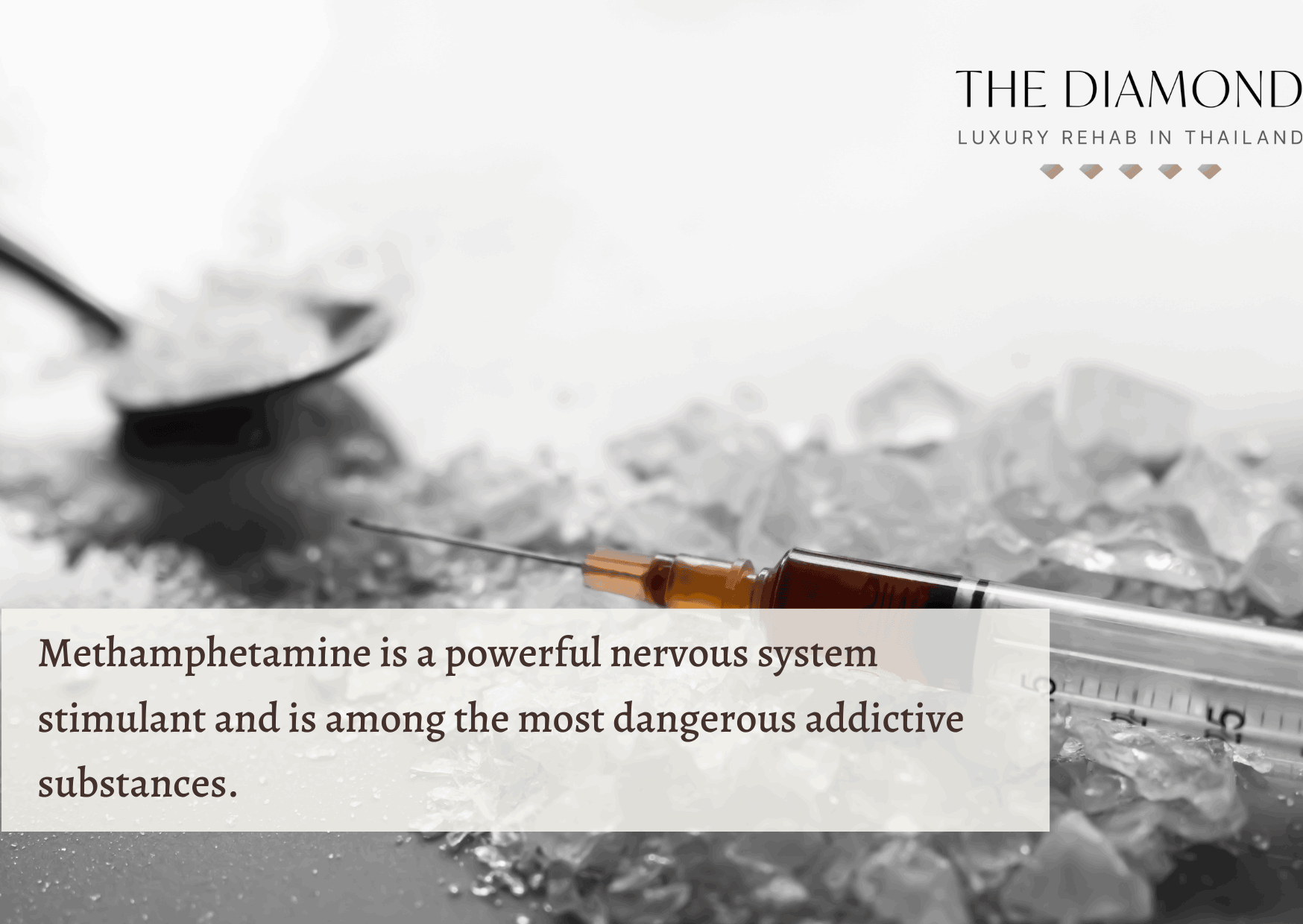
6. Inhalants
Inhalants are medical, industrial, or household products that produce strong vapors that people inhale to experience rush or high effects. Inhalant addiction is a type of substance use disorder characterized by the compulsive consumption of inhalants and the development of various consequences.
In 2021, around 2.2 million people aged 12 and older in the U.S. reported using inhalants within the last 12 months. Among people from the same age group, 335,000 were addicted to inhalants in the same year, according to the National Institute on Drug Abuse.
Causes that contribute to the development of addiction to inhalants include genetic predisposition, peer pressure, history of substance abuse, underlying mental health disorders, and exposure to inhalants through social circles.
The effects of persistent inhalant use can result in severe medical consequences. Chemicals present in inhalants can cause irregular and increased heart rhythms that may lead to deadly heart failure. According to a research report by the National Institute on Drug Abuse, inhalant abuse can cause death due to asphyxiation, suffocation, convulsions or seizures, coma, choking, and fatal injuries associated with vehicular accidents caused by chemical intoxication. Prolonged exposure to toxic chemicals in inhalants may cause significant damage to the brain, heart, lungs, liver, and kidneys. Compulsive use and mild withdrawal are also associated with inhalant addiction. Furthermore, addiction to inhalants may also serve as a risk to the development of other substance use disorders.
Diagnosing inhalant use disorder requires an assessment based on the criteria from DSM-5.
Inhalant affects individuals by inducing drowsiness, disinhibition, agitation, and lightheadedness. Confusion and delirium occur due to exposure to high doses of inhalants. While a person may experience a temporary rush or high with inhalants, adverse effects are far worse. Addiction to inhalants can change a person’s social circle, negatively affect work and education, and cause other problems involving the overall quality of life.

7. Club drugs
Club drugs are mainly consumed at nightclubs, concerts, and bars to reduce inhibitions and heighten sensory perceptions. Club drug addiction is a condition characterized by physical and psychological withdrawal symptoms upon cessation of drug use.
While club drug addiction requires more research, lifetime use of any club drug was up to 15%. In contrast, ecstasy rates were around 14.8% and LSD at 14%, according to a study by the National Survey on Drug Use and Health and the Monitoring the Future Study.
The leading cause of addiction to club drugs is the desire to enhance sociability and reduce inhibitions. Factors contributing to the development of addiction include changes in neurotransmitters in the brain, genetic predisposition, family history, and environmental influences.
Effects of club drug addiction include confusion, sleep deprivation, depression, paranoia, and anxiousness. Blood pressure and heart rate are also increased.
Healthcare professionals diagnose club drug addiction when patients meet the criteria for SUD in DSM-5 and involve patient evaluation.
Club drugs affects a person by inducing significant changes in mood and behavior. Club drugs are often consumed to improve social interactions in club settings, which may lead to addiction and affect how the brain works. This causes Addiction to club drugs can be associated with legal troubles, risky activities such as driving under the influence, and professional problems.
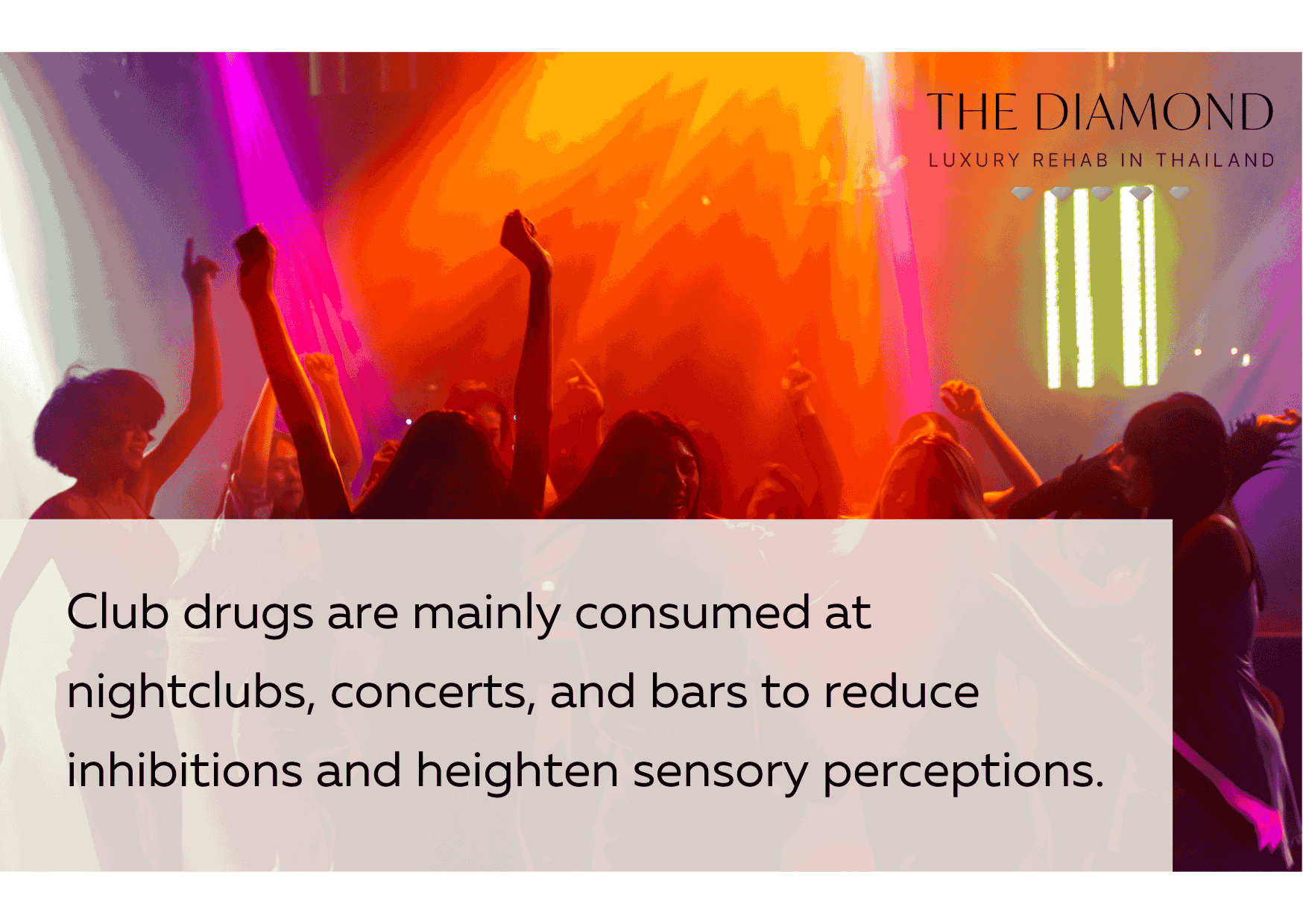
Can drug addiction be cured?
Yes, drug addiction can be cured and treated successfully with a well-structured treatment protocol. However, treatment isn’t a cure but serves as a medium to facilitate and manage the consequences of addiction in the brain and behavior by restoring functioning and well-being.
A 2021 paper published in BMC Public Health by researchers led by Sidsel Helena Karsberg from the Centre for Alcohol and Drug Research in Denmark explored the effectiveness of drug addiction treatments. Individual and group forms of treatment approaches are effective in moderating substance use and enhancing well-being. Social support also increases retention in the treatment.
Drug addiction treatment programs are developed to address an individual’s unique needs. The ultimate goal is to reduce drug use, improve health and social implications, and prevent relapse.

How to treat drug addiction?
Drug addiction is treated effectively through approaches and interventions involving psychotherapy, support groups, and medications. The main goals of the treatment for drug addiction are to help patients stop using drugs, stay drug-free, improve overall well-being and social functioning, or restore family dynamics and relationships.
According to the National Institute on Drug Abuse, medications in drug addiction treatment help manage withdrawal symptoms during detoxification, which is the first stage of the treatment. Medications also reduce the risk of relapse and address comorbid mental health disorders such as depression and anxiety. Managing these disorders can help treat addiction, as co-occurring mental health illnesses are associated with addictive tendencies.
One effective approach to drug addiction treatment is behavioral therapy. The main objectives of behavioral therapy include modifying attitudes and behaviors associated with drug use, improving healthy life skills, and helping patients maintain other treatment approaches.
Cognitive-behavioral therapy (CBT) is the most common psychotherapy approach in treating drug addiction. This psychotherapeutic treatment encourages patients to identify negative thought patterns and behaviors to replace them with positive alternatives. A 2021 paper published in BioPsychoSocial Medicine by Dr. Mutsuhiro Nakao and colleagues from different universities in Japan highlighted that CBT is founded on the basis that a person’s behavior is influenced by their emotions and cognitions. Changing these factors could improve response to healthier habits and coping mechanisms.
Drug addiction treatment may include motivational interviewing to motivate patients to adopt positive changes, contingency management focusing on positive incentives to encourage drug abstinence, and multidimensional family therapy to improve family functioning and dynamics.
Treatment for drug addiction can be inpatient and outpatient. Inpatient or residential treatment offers a structured program for patients with moderate to severe addiction. The program involves staying in a rehab center throughout the treatment. Outpatient treatment involves regular therapy sessions, but patients live at home and maintain employment during the program. This kind of treatment benefits patients with mild to moderate addiction and those who have undergone inpatient treatment.
Support groups are a valuable addition to any kind of treatment for patients with drug addiction. These groups gather people who are in the same situation. Participants receive encouragement to share their experiences, and both provide and receive support for their recovery and sobriety. According to a 2021 paper published in BioMed Central by clinical researcher Gabriela López and colleagues from universities in Rhode Island, Maryland, Massachusetts, and Michigan, participants of group treatment and support display improvements in the results of drug addiction treatments such as abstinence, compliance with treatment, and relapse prevention.

